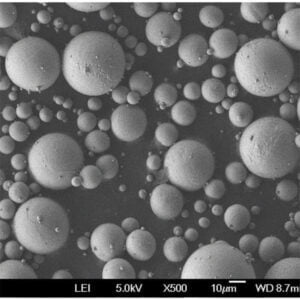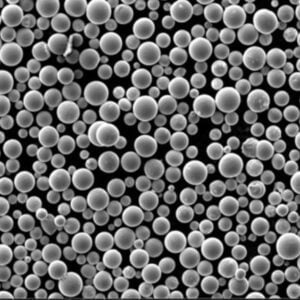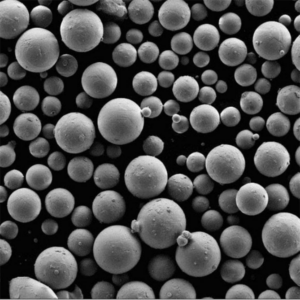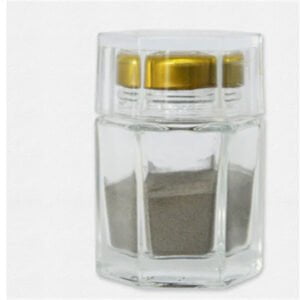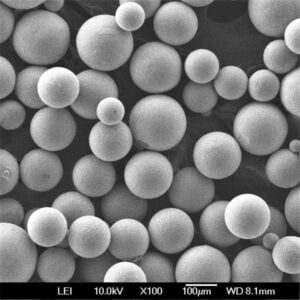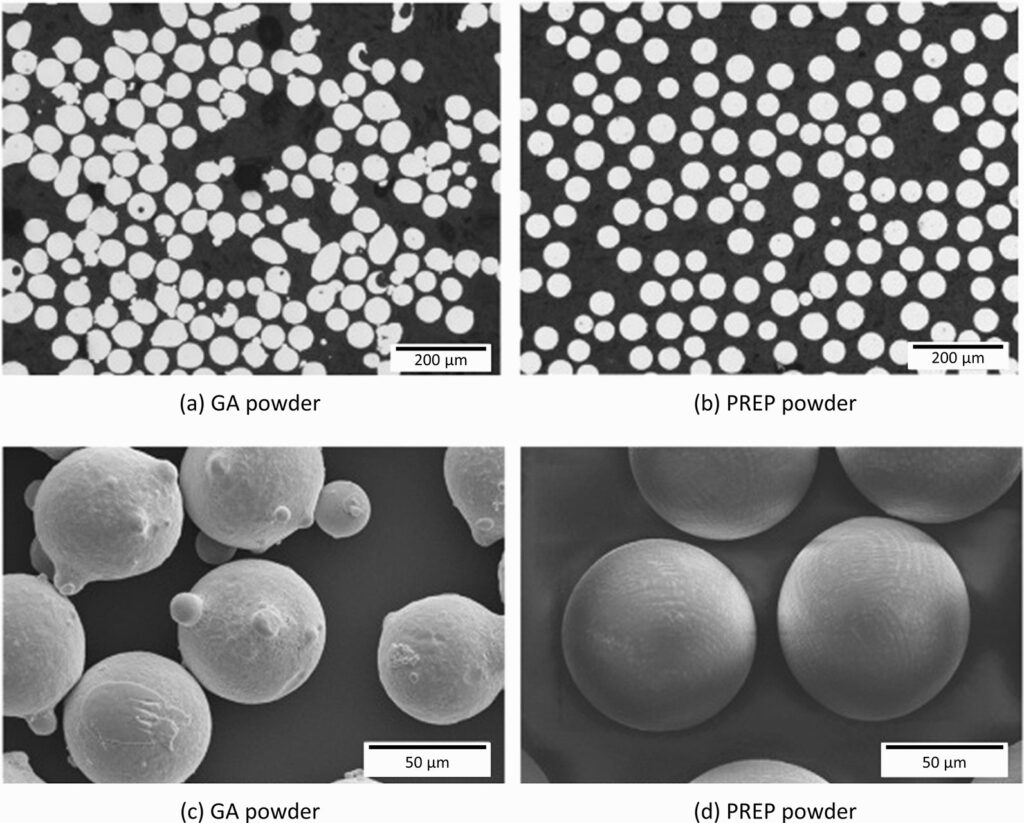
Why 440C Powder is the Superior Choice for High-Stress Parts
Low MOQ
Provide low minimum order quantity to meet different needs.
OEM & ODM
Provide customized products and design services to meet unique customer needs.
Adequate Stock
Ensure fast order processing and provide reliable and efficient service.
Customer Satisfaction
Provide high quality products with customer satisfaction at the core.
share this article
Table of Contents
When you think about stainless steel powder, the first thing that probably comes to mind is its strength, versatility, and corrosion resistance. But not all stainless steel powders are created equal. 440C Powder, in particular, stands out for its exceptional hardness, making it the go-to material for high-wear applications where durability is non-negotiable.
In this comprehensive guide, we’ll dive into everything you need to know about 440C Powder. We’ll break down its composition, properties, applications, pricing, and more. Whether you’re a materials engineer, a manufacturer, or just curious about this high-performance material, this article will give you an in-depth understanding of why 440C Powder is so popular and where it might fit into your next project.
Overview of 440C Powder
440C Powder is a martensitic stainless steel known for its high carbon content, which gives it exceptional hardness and wear resistance. This ultra-hard material is often used in cutting tools, bearings, and valve components, where both strength and resistance to wear and corrosion are crucial.
In its powder form, 440C is especially versatile for applications such as powder metallurgy, additive manufacturing, and metal injection molding. It offers the same excellent properties as its solid form but with the added benefit of flexibility in complex manufacturing processes.
Key Advantages
- Exceptional hardness: Often reaching a hardness of 58-60 HRC after heat treatment.
- High wear resistance: Ideal for applications that experience significant friction or abrasion.
- Good corrosion resistance: Particularly in environments that aren’t highly acidic or chloride-heavy.
- Heat treatable: Can be hardened to a higher degree than many other stainless steels.
Now that we’ve set the stage, let’s get into the nitty-gritty of its composition and properties.
Composition and Properties of 440C Powder
When it comes to understanding the strength of 440C Powder, it all boils down to its composition. The high carbon content combined with a generous dose of chromium gives this material its distinctive balance of hardness and corrosion resistance.
Composition
| Element | Percentage (%) |
|---|---|
| Iron (Fe) | Balance |
| Carbon (C) | 0.95 – 1.20 |
| Chromium (Cr) | 16.0 – 18.0 |
| Manganese (Mn) | 1.00 max |
| Silicon (Si) | 1.00 max |
| Molybdenum (Mo) | 0.75 max |
| Phosphorus (P) | 0.040 max |
| Sulfur (S) | 0.030 max |
The high carbon content (up to 1.2%) is what sets 440C Powder apart from other stainless steels in the 400 series, giving it higher hardness and wear resistance.
Mechanical and Physical Properties
| Property | Value |
|---|---|
| Hardness (HRC) | 58-60 (after heat treatment) |
| Density | 7.7 g/cm³ |
| Tensile Strength | 760 MPa |
| Yield Strength | 450 MPa |
| Elongation (in 50mm) | 5-10% |
| Modulus of Elasticity | 190 GPa |
| Thermal Conductivity | 24.2 W/mK |
| Coefficient of Expansion | 10.1 x 10⁻⁶ /°C (20-100°C) |
Key Takeaways:
- Hardness: The most defining characteristic of 440C Powder is its high hardness after heat treatment, making it ideal for high-wear applications.
- Corrosion Resistance: While 440C offers good corrosion resistance, it’s not as resistant as austenitic stainless steels, particularly in environments with high chloride concentrations.
- Heat Treatability: The material can be hardened through heat treatment, boosting its hardness and wear resistance even further.
Applications of 440C Powder
Given its impressive hardness and wear resistance, 440C Powder is used in a wide range of applications, particularly where high strength and durability are required. It’s especially common in industries that require components to withstand abrasion, friction, and moderate corrosion.
Common Applications
| Industry | Application |
|---|---|
| Automotive | Bearings, gears, and engine components |
| Aerospace | Valve components, high-stress parts |
| Medical Devices | Surgical tools, orthopedic instruments |
| Oil & Gas | Pumps, valves, and drilling components |
| Defense | Knives, armor-piercing projectiles |
| Marine | Propeller shafts, rudder stocks |
| General Engineering | Cutting tools, molds, and tooling dies |
Why 440C Powder Excels in These Applications
Imagine you’re designing a ball bearing for an industrial machine. It needs to be tough, wear-resistant, and able to handle high-stress environments. 440C Powder is perfect for this because it’s incredibly hard but still maintains enough corrosion resistance to survive in less-than-ideal conditions.
Specifications, Sizes, and Standards for 440C Powder
Before you jump into using 440C Powder, you need to make sure it meets the necessary specifications and standards for your project. Like any engineering material, there are precise criteria that must be met to ensure the material performs as expected.
Specifications and Sizes
| Specification | Details |
|---|---|
| Particle Size | 15 to 45 μm (microns) |
| Powder Flowability | 18 – 25 sec/50g (ASTM B213) |
| Apparent Density | 4.1 – 4.5 g/cm³ |
| Tap Density | 4.5 – 5.0 g/cm³ |
| Standards | ASTM A276, AMS 5630, AMS 5880 |
| Packaging Sizes | 1 kg, 5 kg, 25 kg |
| Form | Spherical powder |
Grades
| Grade | Characteristics |
|---|---|
| 440A | Lower carbon, higher corrosion resistance |
| 440B | Higher carbon than 440A, better hardness, lower corrosion resistance |
| 440C | Highest carbon content, best hardness and wear resistance |
| 440F | Free machining version of 440C, easier to machine |
Key Considerations When Selecting 440C Powder
- Particle Size: For additive manufacturing or powder metallurgy, the particle size should be carefully chosen to ensure good flowability and packing density.
- Grade: While 440C offers the best hardness and wear resistance, other grades like 440A or 440B may be better suited for applications requiring higher corrosion resistance.
Suppliers and Pricing of 440C Powder
The cost of 440C Powder can vary significantly based on factors like quantity, supplier, and any additional processing the powder has undergone. For instance, powders with tighter particle size distributions or enhanced flowability will generally come at a premium.
Suppliers and Pricing Details
| Supplier | Location | Price Range (per kg) | Delivery Time |
|---|---|---|---|
| Specialty Powders Inc. | USA | $60 – $80 | 1-2 weeks |
| Euro Metal Powders | Germany | $65 – $85 | 2-3 weeks |
| Global Stainless Ltd. | China | $50 – $70 | 3-4 weeks |
| Precision Metals Co. | UK | $55 – $75 | 2 weeks |
Factors Affecting Pricing
- Quantity: As with most raw materials, the more you buy, the better the price per kilogram.
- Customization: If you require a specific particle size or other custom modifications, you can expect to pay more.
- Location: Local suppliers may offer quicker delivery times but could be pricier compared to overseas options.
Advantages and Limitations of 440C Powder
As you’ve probably gathered by now, 440C Powder has a lot going for it. But like any material, it’s not without its drawbacks. Let’s take a closer look at the pros and cons of using 440C Powder in your projects.
Advantages and Limitations
| Advantages | Limitations |
|---|---|
| High hardness and wear resistance | Lower corrosion resistance than austenitic steels |
| Excellent for high-stress environments | Can be difficult to machine after hardening |
| Heat treatable to further increase hardness | Expensive compared to other stainless steels |
| Good corrosion resistance in moderate environments | Brittle in certain conditions |
| Available in powder form for additive manufacturing | Limited use in highly corrosive environments |
Key Takeaway
If your project requires a material that’s hard and can handle wear and tear, 440C Powder is a strong contender. However, if corrosion resistance is your primary concern (think marine or chemical environments), you might be better off looking at austenitic stainless steels like 316L.
FAQs
Let’s address some of the most common questions people have about 440C Powder.
What is 440C Powder used for?
440C Powder is used in high-wear applications such as ball bearings, cutting tools, valves, and surgical instruments. Its hardness and wear resistance make it ideal for parts that face significant mechanical stress.
How does 440C Powder compare to 304 or 316 stainless steel?
While 440C is much harder and more wear-resistant than 304 or 316, it doesn’t offer the same level of corrosion resistance. 304 and 316 are better suited for environments where corrosion is a bigger concern, while 440C excels in abrasion resistance and mechanical strength.
Can 440C Powder be used in additive manufacturing?
Yes! 440C Powder is commonly used in 3D printing and other additive manufacturing processes to create parts that require high hardness and wear resistance, such as gears, cutting tools, and bearings.
How much does 440C Powder cost?
The price of 440C Powder ranges from $50 to $85 per kilogram, depending on the supplier, quantity, and any custom specifications required.
Is 440C Powder easy to machine?
440C can be challenging to machine once it’s been hardened. In its annealed state, it’s easier to machine, but after heat treatment, it becomes much harder and can wear down cutting tools more quickly.
Conclusion
Whether you’re designing high-performance bearings, cutting tools, or surgical instruments, 440C Powder offers an excellent balance of hardness, wear resistance, and corrosion resistance. While it may not be as corrosion-resistant as some other stainless steels, its exceptional hardness makes it ideal for applications where durability and strength are paramount.
By understanding the composition, properties, and applications of 440C Powder, you’re better equipped to choose the right material for your project. Whether you’re working in automotive, aerospace, or medical fields, 440C Powder’s versatility and performance make it a top choice for high-wear applications.
So, is 440C Powder the right fit for your next project? If you need a material that’s tough as nails and can stand up to serious wear and tear, it just might be.
Get Latest Price
About Met3DP
Product Category
HOT SALE
CONTACT US
Any questions? Send us message now! We’ll serve your request with a whole team after receiving your message.
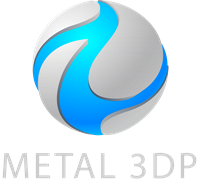
Metal Powders for 3D Printing and Additive Manufacturing
COMPANY
PRODUCT
cONTACT INFO
- Qingdao City, Shandong, China
- [email protected]
- [email protected]
- +86 19116340731






